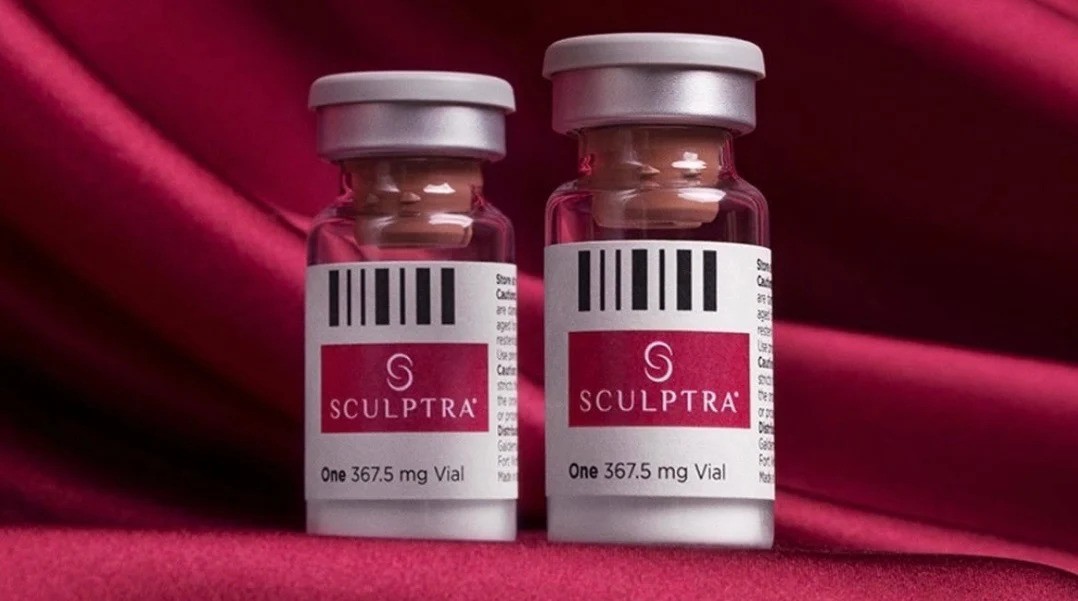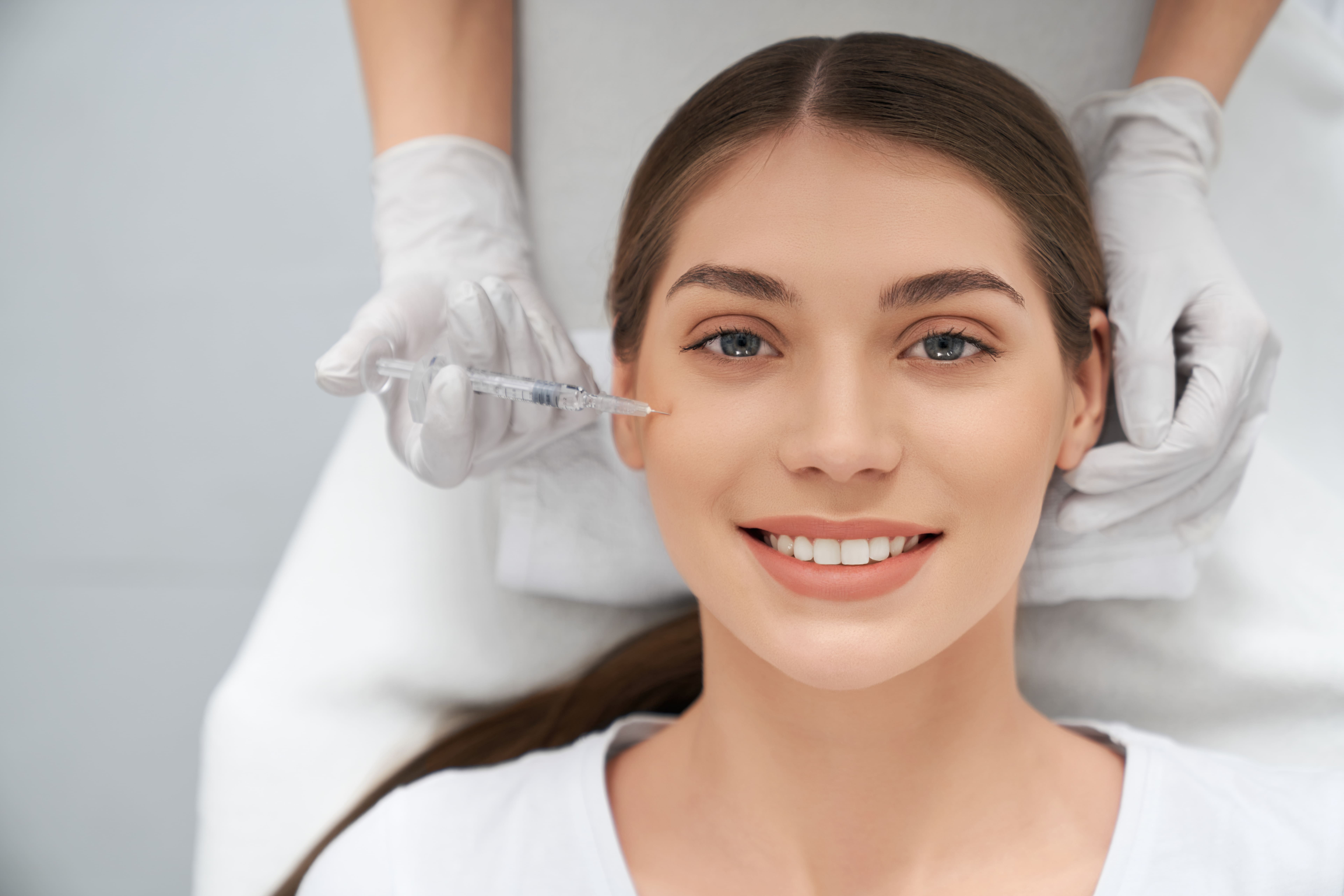Login Form
Registration
Profile Informations
Login Datas
or login
Sculptra Pros and Cons: Is This Filler Right for You?
Sculptra Pros and Cons: Is This Filler Right for You?
Imagine watching your face transform gradually over months—not through surgery or temporary fixes, but by awakening your skin's dormant ability to rebuild itself from within. This isn't science fiction; it's the reality of Sculptra, the injectable treatment that's fundamentally changing how we approach facial aging.
Unlike traditional fillers that simply "fill" wrinkles temporarily, Sculptra works as an architect for your face, rebuilding the collagen foundation that time has slowly eroded. It doesn't just mask the symptoms of aging—it addresses the root cause.
But is this revolutionary approach right for everyone? Should you choose this gradual transformation over the instant gratification of conventional treatments? As the aesthetic world increasingly embraces "prejuvenation" and sustainable beauty solutions, understanding Sculptra's unique advantages and limitations has never been more important.
This guide strips away the marketing hype to reveal the scientific truth about this collagen stimulator, helping you decide if Sculptra's patient approach to facial rejuvenation aligns with your aesthetic journey.
What is Sculptra?

Sculptra is an FDA-approved injectable treatment made from poly-L-lactic acid (PLLA), a biocompatible synthetic material that stimulates your body's natural collagen production. Unlike hyaluronic acid fillers that immediately add volume to targeted areas, Sculptra works gradually by addressing the underlying cause of facial aging – collagen loss.
Originally approved in 2004 for treating facial lipoatrophy in HIV patients, Sculptra received broader FDA approval in 2009 for correcting shallow to deep facial wrinkles and folds. What sets it apart is its classification as a "collagen stimulator" rather than just a filler, working with your body to revitalize collagen production and restore facial volume over time.
How Sculptra Works
When injected beneath the skin's surface, Sculptra's microparticles of PLLA work as a biostimulator, triggering the body's natural healing response. This process gradually encourages the production of new collagen fibers in the deep dermis. The PLLA particles are eventually metabolized by the body, leaving behind the newly formed collagen network.
The treatment typically involves a series of injection sessions spread over several months, with results developing gradually. Most patients require 2-3 treatment sessions spaced 4-6 weeks apart to achieve optimal results. Common treatment areas include the cheeks, temples, jawline, and nasolabial folds (the lines running from the sides of the nose to the corners of the mouth).
The Advantages of Sculptra

Long-lasting Results
One of the most significant Sculptra pros is its impressive longevity. While traditional hyaluronic acid fillers typically last 6-12 months, Sculptra results can persist for up to two years or more after your treatment series is complete. This extended duration means fewer maintenance treatments and potentially better value over time.
The results continue to improve for several months after treatment as collagen production increases. This progressive enhancement offers sustained improvement rather than the immediate but temporary results seen with conventional fillers. For patients seeking long-term solutions to facial aging, this represents a substantial advantage.
Natural-Looking Enhancement
Perhaps the most appealing aspect of Sculptra is the remarkably natural-looking results it provides. Because it works by stimulating your body's own collagen rather than simply adding volume, the improvements develop gradually and integrate seamlessly with your facial structure.
This gradual transformation helps avoid the "overfilled" appearance that can sometimes occur with traditional fillers. Instead, patients experience a subtle restoration of youthful facial contours and improved skin quality. Friends and colleagues may notice you looking refreshed and well-rested without being able to pinpoint exactly what has changed.
Additionally, Sculptra improves overall skin quality beyond simply filling wrinkles. The increased collagen production enhances skin texture, firmness, and elasticity throughout the treated areas, providing a more comprehensive rejuvenation effect.
Versatility and Customization
Sculptra offers remarkable versatility, effectively addressing volume loss in multiple facial regions. It's particularly effective for:
- Restoring volume to hollowed cheeks
- Softening deep nasolabial folds
- Improving jawline definition
- Adding volume to temples
- Reducing marionette lines (lines running from mouth corners to chin)
This versatility allows practitioners to customize treatment plans for each patient's unique facial anatomy and aesthetic goals. Sculptra also works well in combination with other treatments like botulinum toxin or traditional fillers, creating comprehensive rejuvenation strategies tailored to individual needs.
Potential Drawbacks to Consider
Delayed Results
For those seeking immediate improvement, the gradual nature of Sculptra results may be considered a disadvantage. Unlike hyaluronic acid fillers that deliver instant volume, Sculptra requires patience as the collagen-building process unfolds over several months.
While you might notice some immediate improvement after injection (due to the water used to dilute the product), this temporary effect diminishes within days. The true results begin appearing around 4-6 weeks after treatment and continue improving for several months. For patients desiring quick results for a special event or occasion, traditional fillers might be more appropriate.
Additionally, Sculptra usually requires multiple treatment sessions to achieve optimal results, with most patients needing 2-3 sessions spaced several weeks apart. This extended treatment timeline requires commitment to the complete protocol.
Cost Considerations
When evaluating Sculptra pros and cons, cost is an important factor. The initial investment for a Sculptra treatment series is typically higher than that of traditional fillers. Treatment costs vary widely based on geographic location, provider expertise, and the number of vials required, but patients should expect to invest in multiple sessions.
For many patients wondering "is Sculptra worth it?", the answer depends on their specific goals. The value proposition becomes clearer when considering that while the initial investment may be higher than traditional fillers, the long-term maintenance costs could actually be lower due to Sculptra's durability.
Patients should discuss total treatment costs during their consultation to understand the full financial commitment required for optimal results.
Side Effects and Safety Profile
Is Sculptra safe? Generally, yes—Sculptra has a well-established safety profile when administered by properly trained practitioners. However, like all injectable treatments, it carries potential side effects that patients should understand before proceeding.
Common Sculptra side effects include temporary injection site reactions such as:
- Swelling, redness, and tenderness
- Bruising at injection sites
- Itching or discomfort
- Small lumps or bumps under the skin
Most of these side effects are mild and resolve within days to a week. However, one unique consideration with Sculptra is the possibility of developing small, non-visible nodules under the skin in treated areas. These typically resolve on their own but underscore the importance of proper injection technique and post-treatment massage.
To minimize the risk of nodules, patients are typically instructed to follow the "5-5-5 rule"—massage the treated areas for five minutes, five times a day, for five days after treatment. This helps ensure even distribution of the product throughout the treatment area.
More serious complications are rare when Sculptra is administered by experienced providers, but can include:
- Granuloma formation (inflammatory reaction)
- Infection at injection sites
- Asymmetry or irregular contours
- Vascular occlusion (extremely rare)
These risk factors highlight the critical importance of choosing a qualified, experienced practitioner for your Sculptra treatments.
Is Sculptra Right for You?

Ideal Candidate Profile
When weighing Sculptra pros and cons, consider whether you match the profile of an ideal candidate:
- Individuals with gradually developing facial volume loss
- Patients seeking natural-looking, progressive improvement
- Those who prefer fewer maintenance treatments and are willing to wait for results
- People looking for overall skin quality improvement alongside volume restoration
- Patients without a history of keloid scarring or hypertrophic scarring
- Individuals with healthy immune systems
Sculptra may not be the best choice for those seeking immediate results, patients with numerous facial scars or active skin inflammation, or those unwilling to commit to multiple treatment sessions and the associated aftercare.
What to Expect During Treatment
A typical Sculptra treatment begins with a thorough consultation to assess your facial anatomy, discuss your aesthetic goals, and develop a customized treatment plan. During the actual procedure, your provider will:
- Cleanse and prepare the treatment areas
- Apply topical anesthetic if needed for comfort
- Reconstitute Sculptra with sterile water and possibly lidocaine
- Perform precise injections into targeted facial regions
- Massage the treated areas to ensure even distribution
- Provide detailed aftercare instructions
The injection process typically takes 30-45 minutes. Most patients experience minimal discomfort during treatment, especially when lidocaine is mixed with the Sculptra solution.
After treatment, you can generally return to normal activities immediately, though you might experience some redness, swelling, or bruising. Following your provider's aftercare instructions—particularly the massage protocol—is essential for optimal results and minimizing the risk of nodules.
Making an Informed Decision: Is Sculptra Worth It?
When considering whether Sculptra is worth it for you, ask yourself these questions:
- Am I comfortable with gradual results that develop over months rather than immediate improvement?
- Am I willing to invest in a series of treatments for optimal outcomes?
- Do I understand and accept the potential side effects and required aftercare?
- Am I seeking natural-looking volume restoration that lasts longer than traditional fillers?
- Do I have realistic expectations about what Sculptra can achieve?
Discussing these considerations with a qualified provider will help you determine if Sculptra aligns with your aesthetic goals and preferences. During your consultation, be sure to ask about:
- The provider's experience specifically with Sculptra
- Before and after photos of their Sculptra patients
- Expected number of treatments for your specific concerns
- Total anticipated cost of the treatment series
- Potential alternative treatments that might address your concerns
Is Sculptra Worth It? Weighing the Pros and Cons
When evaluating whether Sculptra is right for you, it's essential to consider both its advantages and limitations. On the positive side, Sculptra offers exceptionally long-lasting results that can persist for up to 2+ years, creating natural-looking, gradual improvements that avoid the "overdone" appearance. One of its most significant benefits is how it stimulates your body's own collagen production rather than simply adding volume, which leads to improved overall skin quality and texture. The treatment typically requires fewer maintenance sessions compared to traditional fillers and offers versatility for addressing multiple facial areas in a customized approach.
However, Sculptra does come with certain drawbacks worth considering. The results develop gradually, taking months to reveal their full effect, which may not suit those seeking immediate improvement. The treatment protocol requires multiple sessions spaced several weeks apart for optimal outcomes, and the initial financial investment is typically higher than traditional fillers. Some patients may experience small nodules under the skin, though this risk is minimized through proper technique and following the post-treatment massage protocol. This required aftercare—massaging the treated areas for five minutes, five times daily, for five days after treatment—requires commitment from patients. Finally, those needing quick results for an upcoming event might find Sculptra's gradual approach less suitable for their immediate goals.
Final Thoughts
This collagen-stimulating treatment represents an innovative approach to facial rejuvenation that works with your body to restore volume and improve skin quality gradually. While not instant, the natural-looking and long-lasting results make it an attractive option for many patients seeking comprehensive facial renewal.
By understanding the pros and cons outlined in this guide, you can make an informed decision about whether this unique injectable aligns with your aesthetic goals, timeline, and preferences. For those willing to invest in the process, this treatment can deliver remarkable rejuvenation that evolves gradually and lasts for years.
Professional consultation remains the essential first step in determining if this collagen stimulator is the right choice for you. With proper planning, skilled administration, and appropriate expectations, you can achieve natural-looking facial rejuvenation that helps you look refreshed and vibrant for years to come.


